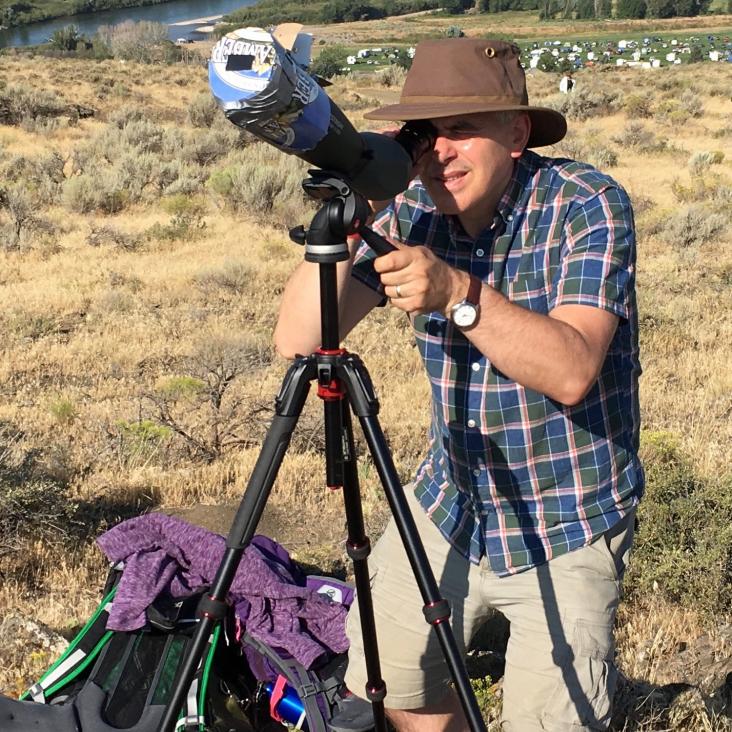On beam characterization of ground-based CMB radio telescopes using UAV-mounted sources: application to the QUIJOTE TFGI and plans for LSPE-Strip
Journal of Instrumentation IOP Publishing 20:06 (2025) P06057
Abstract:
The Large Scale Polarization Explorer (LSPE) project, funded by the Italian Space Agency (ASI), includes the development of LSPE-Strip, a ground-based radio telescope for observing Cosmic Microwave Background (CMB) anisotropies. LSPE-Strip, nearing its construction phase, will operate from the Teide Observatory in Tenerife, employing 49 coherent polarimeters at 43 GHz to deliver critical data on CMB anisotropies and 6 channels at 95 GHz as atmospheric monitor. On-site characterization of such advanced instruments is crucial to detect possible systematic effects, such as gain fluctuations, beam distortions, and pointing errors, that can compromise performance by introducing spurious polarizations or radiation collection from unintended directions. To address these challenges, a drone-mounted Q-band test source for on-site characterization of LSPE-Strip's polarimeter array was developed. Modern Unmanned Aerial Vehicles (UAVs) offer a flexible approach for antenna pattern measurements, yet their use in high-frequency radio astronomy is not consolidated practice. In October 2022, a UAV-based measurement campaign was conducted with the TFGI instrument on the second QUIJOTE telescope in Tenerife, in collaboration with the Instituto de Astrofísica de Canarias. This pioneering effort aimed to validate UAV-based beam characterization methods and assess QUIJOTE's performance under operational conditions. Preliminary results demonstrated high measurement accuracy, leveraging QUIJOTE's dual-receiver configuration for beam validation. These findings provide valuable insights for optimizing UAV systems in preparation for LSPE-Strip's future characterization.The C-Band All-Sky Survey (C-BASS): new constraints on the integrated radio spectrum of M 31
Monthly Notices of the Royal Astronomical Society Oxford University Press (OUP) 523:3 (2023) 3471-3486
The C-Band All-Sky Survey (C-BASS): template fitting of diffuse galactic microwave emission in the northern sky
Monthly Notices of the Royal Astronomical Society Oxford University Press (OUP) 513:4 (2022) 5900-5919
Characterizing the performance of high-speed data converters for RFSoC-based radio astronomy receivers
Monthly Notices of the Royal Astronomical Society Oxford University Press 501:4 (2020) 5096-5104
Abstract:
RF system-on-chip (RFSoC) devices provide the potential for implementing a complete radio astronomy receiver on a single board, but performance of the integrated analogue-to-digital converters (ADCs) is critical. We have evaluated the performance of the data converters in the Xilinx ZU28DR RFSoC, which are 12-bit, 8-fold interleaved converters with a maximum sample speed of 4.096 Giga-sample per second (GSPS). We measured the spurious-free dynamic range (SFDR), signal-to-noise and distortion (SINAD), effective number of bits (ENOB), intermodulation distortion (IMD), and cross-talk between adjacent channels over the bandwidth of 2.048 GHz. We both captured data for off-line analysis with floating-point arithmetic, and implemented a real-time integer arithmetic spectrometer on the RFSoC. The performance of the ADCs is sufficient for radio astronomy applications and close to the vendor specifications in most of the scenarios. We have carried out spectral integrations of up to 100 s and stability tests over tens of hours and find thermal noise-limited performance over these time-scales.Resolved observations at 31 GHz of spinning dust emissivity variations in rho Oph
MONTHLY NOTICES OF THE ROYAL ASTRONOMICAL SOCIETY 495:3 (2020) 3482-3493


